Posted by Managementguru in Organisational behaviour, Principles of Management, Strategy
on Mar 31st, 2014 | 0 comments
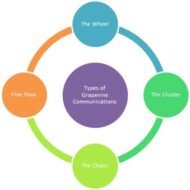
What is Grapevine? In every organization there exists an informal channel of communication called the grapevine in operation. It is called so because it stretches throughout the organization in all directions irrespective of the authority levels. Organizational Benefits that come along with Grapevine It is quite natural for a group of people working together to be interested in one another and talk about appointments, promotions, retrenchments or even domestic affairs. Some people derive extraordinary pleasure from gathering such ‘secret’ information and transmitting it to others. They are the leaders who control the grapevine. Soon this info reaches everybody and becomes an ‘open secret.’ Grapevine is more a product of a situation than of a person. Certain situations like insecurity of service, uncertainty over promotions, special increments to a colleague, certain innovations in the organization that are likely to affect the job prospects of the employees, are sure to activate the leaders of the grapevine that instantly spreads all kinds ofrumors in the organization. Communication Network of an Organization: The channel’s network is in a horizontal fashion as the communication is only between the workers of the same level of hierarchy. Apprehensions experienced by workers on matters like promotions and retrenchments become an obsession with them. Talking about them may not alleviate their fears, but it certainly provides them emotional relief. The existence of the grapevine proves that the workers are interested in their associates. The very fact they talk among themselves helps to promote organizational solidarity and cohesion. The management should work up this kind of situation to their advantage. How? Well, all information cannot be transmitted to the employees through the official channels. If there is some useful information unsuitable for being transmitted through official channels, it can be done through grapevine. The speed with which information is transmitted through the grapevine is just remarkable. Spot the Key Persons: The management should try to spot out the key persons involved in this process and keep them well informed to block harmful rumors reaching the employees. Also the grapevine can be used as an “acid test “to check the pulse of the employees. If there is any false rumor the management should immediately use the official channels to contradict and to dispel the fears from the minds of the employees. Grapevine might be Harmful Too: One of the major drawbacks of the grapevine is that it may spread baseless or distorted news which may sometimes prove harmful even to the employees. The information is sometimes incomplete leading to ambiguities. The swiftness with which the grapevine transmits information may even be damaging, before the management becomes aware of it and can take any rectifying steps. How to Handle the Rumor-Mongers? If the workers are associated with decision-making, the rumor-mongers will be automatically frustrated. If the workers are already aware, say, that the plant is to be modernized but the modernization process is not going to involve any retrenchments, the arrival of new machinery and engineers will not cause any undue apprehensions among them. Thus the harmful effects of the grapevine can be successfully counteracted. Organisations should indulge themselves in sending positive signals to the employees to win their trust and...

Posted by Managementguru in Business Management, Human Resource, Principles of Management, Training & Development
on Mar 22nd, 2014 | 0 comments
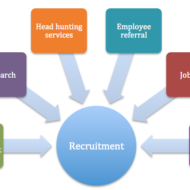
Popular Recruitment Channels Personnel procurement involves recruitment, selection and placement of capable employees who act as the key players in determining the success or failure of an organization. Recruitment serves the purpose of identifying and luring prospective candidates for the actual or anticipated vacancies of the organization. Recruitment is termed “positive” in that it stimulates employees to apply for jobs in organizations to increase the “hiring ratio”, that is the number of applicants for a job. Personnel Inventory: Recruitment is an extensive process that has to be dealt with care by companies as it is the first step for preparing personnel inventory that matches the criteria laid down in job specification and to select only those who are found suitable for the vacant positions. Selecting right people for the right job is very important as it ensures organizational stability and consistency. The sources of recruitment can be internal or external. Internal sources of recruitment comes in handy when you want people to understand and respond well to overall objectives of the organization which can be achieved by promotions, quite suitable for managers at the middle level and top level. Those already working for the organization will be quite familiar with the activities and requirements of the firm and a promotion would serve to boost their morale, thus resulting in improved performance coupled with commitment. External sources of recruitment may be as follows: Advertising: This method is suitable when the organization plans to expand its activities across the geographical boundaries and attract talent which is spread out. The company to reach out to a larger target group can advertise its requirements through print media, radio, television, professional and technical journals. This is a popular way of recruitment as the response ratio is quite on the higher side when compared to any other source of recruitment. Employment exchanges: The unemployed personnel register their names and qualifications in the exchanges and special employment exchange sources are organized for ex-military personnel, physically handicapped and professionals in different places. It is really a matter of concern that a major percentage of youth prefer only white collar jobs and they rate other blue collar jobs and self employment opportunities a step lower. This attitude should change as there will be no permanent jobs existing in the future but only projects. Eventually people will be shifting between various projects and at the end of the day, whether they derive any satisfaction or a feeling of cherishment about their job or work will become a big question mark. Schools and colleges: These are excellent sources of external recruitment as corporate companies offer good placement opportunities to students studying in business schools and other engineering and professional institutions even before the completion of their degree and students should aim to acquire admission in reputed educational institutions as it increases the chance of confirmed placement. Popular software and engineering companies want the best talent in the industry and the benefit of hiring freshers is that they can be well trained and molded as per their job requirements. Trade unions: In firms where trade unions are effective, the management looks up to the union in their recruitment efforts. It makes possible good labor relations. Advantages of recruiting from outside the company: Employees from varied background with broad experience add value to the company The new employees can infuse fresh ideas that may prove fruitful. Strategic Principles of recruitment: Employ the best qualified person for each job Retain the most promising ones Offer promising careers and security Provide opportunity for empowerment Be competitive with public policies Provide facilities for personal growth on skill and knowledge. Other Sources: Other sources...

Posted by Managementguru in Business Management, Human Resource, Organisational behaviour, Principles of Management
on Mar 20th, 2014 | 0 comments
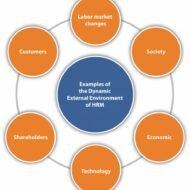
Changing Trends and Challenges in HRM The very conception of Human resource management has changed tremendously in the recent past as it has taken a new form and shape that embraces each and every activity of the organization, as every action requires human intervention. Human resource has become the most important of all the resources from the point, where it was merely one of the many resources. What has caused this great transformation? What has made firms recognise that manpower is the most important of all resources to the extent of including human resource in their accounting as assets! Evolution of HRM: A thorough analysis of the evolution of human resource management clearly indicates the exceptional quality of manpower, especially managers to tackle the very many challenges that come on their way. A manager who was merely a reporter to the top level management has now become indispensable. The laborers whether skilled or unskilled cannot be treated the way they were treated earlier, as the introduction of many labor laws support their cause. The legal framework guides the organization in terms of pay scale, bonus and increments and supports the workers in their welfare, security and safety. Globalization, Privatization and Liberalization: With the initiation of globalization, privatization and liberalization the firms are exposed to more competition and the managers have to put their think tanks to the best use in order to sustain and succeed in the market. People from various background work together in a multinational firm; their language, dress code, food habits, style of working and adaptability are quite different from one another. A human resource manager must go for a “culture” that is unique to the organization. He has to be proactive in order to safeguard the employees from a “culture shock”, by training them sufficiently before induction. Human behavior: Management of human resources by itself is complex and it needs people with special skills. The unpredictable nature of human behavior makes the job more difficult. In the task of managing the emotions and behavior of his employees, a manager must not lose his composure at any point of time for which he has to be a balanced personality. How many of us are gifted with a balanced state of mind and especially in a crisis situation many of us scream our lungs out and blame others for our own faults. Employee Motivation: Motivating the employees to do the job and steer them in the right direction is a Himalayan task for most of the managers. For this they have to adopt a participative style of leadership that will make the employee come closer to them in terms of trust and openness and also it enhances the productivity by improving the efficiency. A relaxed mind is more efficient than one with tight cords. It thinks and acts freely and gives its best. Now a days employees are more educated and informative, so you cannot take them for granted. They are aware of their rights and privileges regarding their jobs and work environment and managers need to handle them very cautiously and intelligently when it comes to satisfying their needs, sentiments and attitude. Handling a large number of employees, allotment of employees to shifts, managing the turnover and keeping the morale high are some of the challenges that the management has to face up to. Achieving the Desired Results: The biggest challenge of any modern manager would be to show results by managing his team. Achieving targets in the specified time is a herculean task; also making people working for the firm realize and understand that unless and until their products and services are of international standards and customer satisfying,...

Posted by Managementguru in Business Management, Human Resource, Organisational behaviour, Principles of Management, Training & Development
on Mar 18th, 2014 | 0 comments
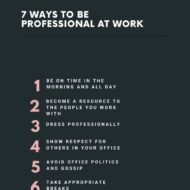
Self Appraisal-Amuse Yourself What is Self Appraisal: Self evaluation process involved in determining the level of self efficacy . By and large, corporate companies go for a one tier system of appraisal-where the supervisor generates a confidential report about his subordinates as and when required. This serves as a basis for the management to decide on increments or promotion for the respective candidate. But the question is, is this system fool proof? Definitely not. There are certain lapses that deserve mention and the management has to design suitable appraisal formats to improve or strengthen the weak areas. Purple Minimalist We Are Hiring Project Manager Poster by managementguru.net Some areas where the appraisal process can take a deviation: A biased report given by the appraiser due to various reasonsPerception of appraiser may be wrongThe appraiser sees the appraisee through his ideas and not from the management’s view point, which may lead to clash of ideas where the appraisee is made the victimFlaws in the design of the appraisal process where the top management may not come to know the real need of the appraiseeAppraisees sometimes don’t identify themselves with the organization and its objectivesAppraisees may not know what kind of behavior traits is expected of them by the management So it is imperative on the part of the management to introduce self appraisal process in its agenda, where the appraisee himself becomes the appraiser. This helps the organization to accomplish its overall objectives in a short time through a high performance system. This kind of appraisal by ‘oneself’ makes each and every employee to clearly understand where he stands against the expected scale of behavior. 7 ways to be professional at work Two-tier system as we may call it will help in the following manner: Participative approach infuses a sense of belongingness amongst the workforcePotential of the appraisee can be brought outThe real problem of the employees is knownHigher level of approach or interest to know or evaluate one’s own behavior is seen. Basically, organizations must examine their assumptions about human behavior and come to a common belief about people. If they believe people are basically “bad” management might go for hiring “watch-out-look-out” supervisors, rigid disciplinary regulations, and separate facilities such as parking, dining and rest rooms. All these clearly spell out the existence of distinction between the management and workforce. If the organization comes to a common agreement that people are basically “good”, entirely the approach will be different. Every worker becomes a manager and uniform treatment is given to both the employees and managers of higher cadre. Essentially in my opinion, no organization or work society will succeed without visionaries and uniform treatment that is consistent with basic principles and ethics. It has to be understood that work attitudes and values are ultimately a company’s best competitive advantage. Note: Larsen & Toubro – Engineering major Larsen & Toubro has developed a competency matrix which lists 73 competencies-that vary across managerial levels-to measure performance and gauge developmental needs of its employees. National Panasonic – The Japanese white-goods major has developed a performance-assessment system driven by Key Result Areas (KRAs). KRAs describe performance goals-business, functional, and behavioural ones-with defined time-frames and are decided jointly by the employee and his manager at the beginning of the...

Posted by Managementguru in Business Management, Human Resource, Organisational behaviour, Principles of Management
on Mar 17th, 2014 | 0 comments
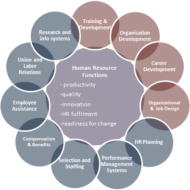
Personnel or Human Resource Management: is the strategic approach to the management of an organization’s most valued assets – the people. Human resource is always in great demand as competent or skilled labor is in short supply. It is important to remember that no one is born with the value of excellence, as the acquisition is gradual in nature and only possible through proper training and one’s own cognitive perception. It is not that people have to belong to the elite group to make their mark in the respective fields. The best leaders and managers often are ordinary people creating amazing results and astounding success. Try some of these golden etiquettes for achieving excellence in the management of human resource: Clear objectives have to be set with the consensus of the employees Recognize the progress Confront problems Manage with flexibility Understand the value of quality Manage time for better results Enhance decision-making skills by delegating authority Master stress Motivate people Think like a winner Pursue a participative style of leadership To achieve the goals of the organization, the HR department will have to reorient itself on the following lines. It is very important that ‘Right people are chosen for the Right job’. During the induction stage, employee attitudes must be shaped in harmony with the culture of the organization. Dynamic training system should be introduced which is supposed to be a continuous process rather than a sporadic exercise. Quality of Work Life: Organization should ensure satisfactory quality of work life in order to minimize the sense of alienation, found in the workplace. It should contribute to an atmosphere to improve self-discipline, self-motivation and self realization for the purpose of production optimization in terms of both quantity and quality. The presence of a fair performance appraisal system will facilitate the growth prospects of employees in terms of career advancement and development. Fair Compensation: Institutions must work out a fair compensation package for all categories of workmen so that they may be able to receive the living wages instead of subsistence-level wages. The accent should be on production and productivity, without any compromise. Opportunities are aplenty, particularly for experienced personnel as the industries offer wide job prospects for the prospective candidates. Now-a-days job hopping is rampant which is a serious issue to be managed. A number of organizations offer bonus in the form of stock that interjects a feeling of oneness, which ensures alignment of interest between employees and the management. Favored position in terms of enhanced performance from the work force is possible only if the management comes down to embrace and lend their ears to certain rational demands form the other end. Security of Employment Increased wages Employee ownership Participation and employment Internal promotions Information sharing Incentives etc., The personnel function can 1) Attract attention to indicate the importance attached to management’s process and the various policies, practices and systems that support the process. 2) Provide necessary information and expertise on best practices in rival companies to benchmark the process and provide with analytical support for diagnosing and recounting solutions to problems arising in the employee management relation. 3) Engage in business decisions and accelerate change that is consistent with the underlying values of the company. Note: The laws and matters relating to wages and bonus come under the purview of the Ministry of Labor and Employment. The Minimum Wages Bill was passed by the Indian Dominion Legislature and came into force on 15th March,...










